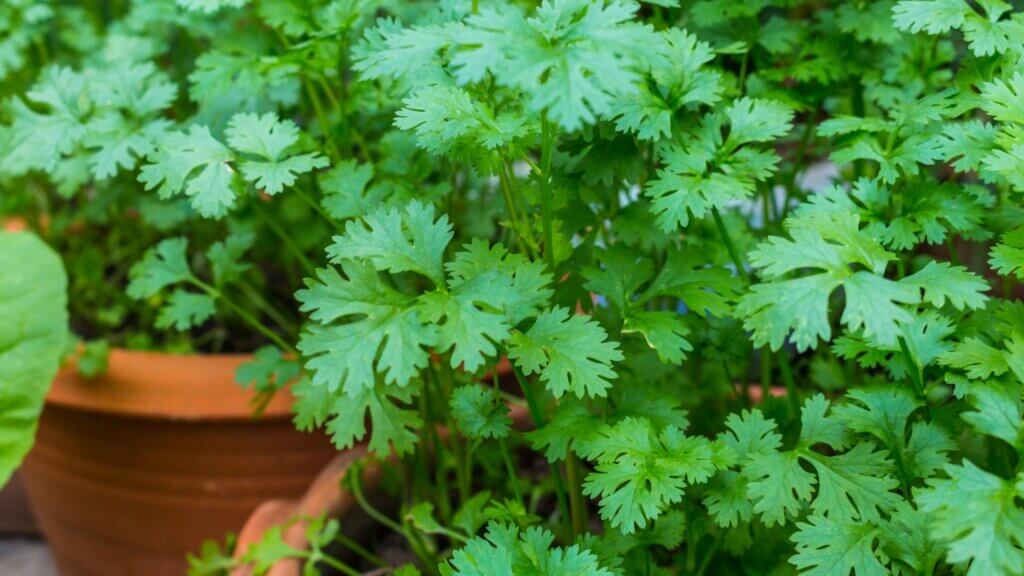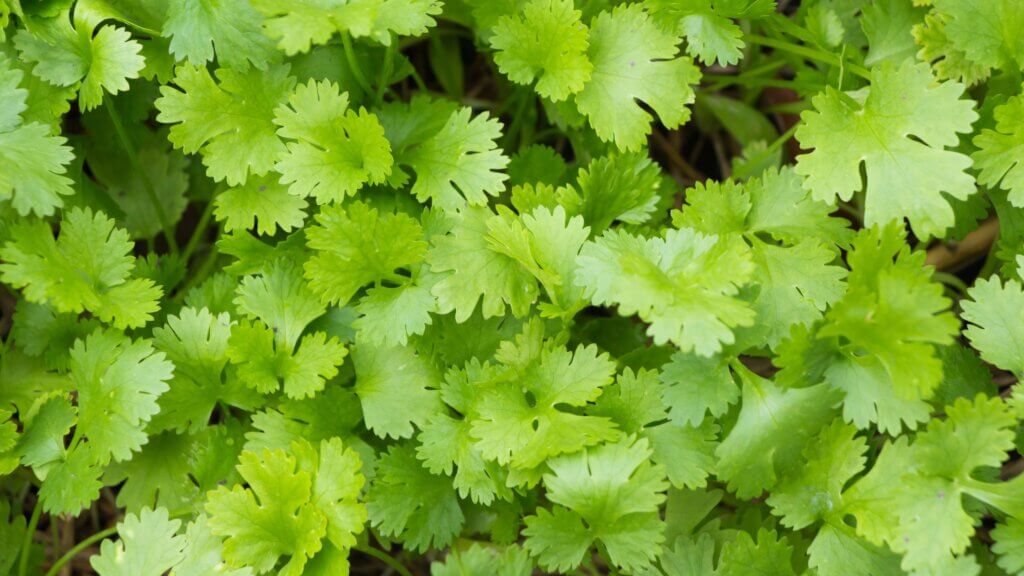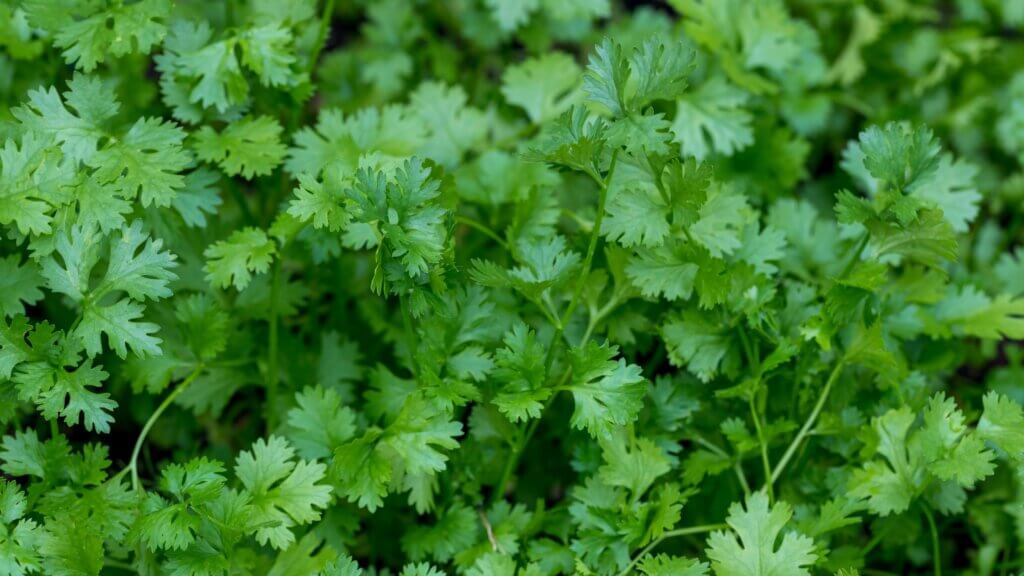Coriander, or cilantro, as it’s known internationally, is a beloved herb that brings a refreshing citrus-like flavour to numerous dishes across global cuisines. Despite its less glamorous name origin—derived from the Greek word koris, meaning bed bug—this versatile, aromatic herb is a favourite in many kitchens. In this article, we’ll cover everything you need to know about how to plant coriander seeds, ensuring a lush and productive herb garden.
Why Plant Coriander?
Coriander AKA Cilantro, is not only a flavour powerhouse but also a nutritional one. Both the fresh leaves and seeds of Coriander are edible, providing a valuable source of vitamins and minerals, including vitamin K, potassium, and antioxidants. Originating from southern Europe and the Middle East, coriander is now cultivated worldwide and is especially popular in Asian, Central, and South American cooking. With the right growing conditions, coriander can reach up to 60 cm in height, making it a striking and useful addition to your herb garden.
How to Plant Coriander Seeds:
1. Selecting the Right Location to Plant Coriander Seeds
- Sunlight: Coriander thrives in full sun, needing at least four hours of direct light daily. However, in hot climates, partial shade during the peak of the day can help prevent bolting.
- Temperature: This herb is frost-tender and doesn’t do well in extreme heat. In South Africa, coriander grows best in early spring (around September) once the risk of frost has passed, or during the cooler season in subtropical regions. When grown in hot or poor conditions coriander tends to flower early resulting in a short lived plant.
2. Preparing the Soil For Coriander Seeds
- Well-Drained and Rich Soil: Coriander prefers soil that drains well and is rich in organic matter. If you’re growing in containers, use drainage materials like broken pots or coarse gravel at the base.
3. Sowing Coriander Seeds
- Direct Sowing : Coriander seeds should be sown directly in the soil where they are to grow, as transplanting can cause bolting. Sow seeds about 1 cm deep, spacing rows 30-35 cm apart. Thin seedlings to 20 cm apart once they are 4-5 cm tall.
- Container Planting: If growing in containers, choose pots that are at least 15 cm deep to accommodate the plant’s taproot. Sow seeds at the same depth and spacing as in outdoor planting.
Tip: For a continuous supply of fresh coriander, sow seeds every three weeks during the growing season.

Care and Maintenance for Coriander
1. Watering
- Consistent Moisture: Coriander prefers evenly moist soil but is sensitive to overwatering. Drip irrigation is ideal for maintaining consistent moisture levels, especially during South Africa’s hot summer months. Avoid watering directly before harvest to prevent the leaves from becoming too soft.
- Avoid Root Rot: Ensure that the soil or container has excellent drainage, as coriander does not tolerate waterlogged conditions.
2. Mulching and Fertilisation
- Mulching: Use organic mulch to retain soil moisture and regulate temperature. This also helps prevent weeds from competing for nutrients.
- Fertiliser: Coriander is a light feeder. An initial application of balanced fertiliser (such as 3:1:5) can be incorporated into the soil before planting. Additional liquid fertiliser can be used every few weeks to boost growth.
Note: Excessive nitrogen fertilisation may lead to lush but less flavourful leaves.
Harvesting Coriander
- Leaves: Start harvesting leaves when the plant reaches about 10 cm in height. Snip stems from the base to encourage new growth, but always leave some foliage to keep the plant healthy.
- Seeds: If you wish to harvest seeds, let the plant flower and the seeds mature. Wait for the seeds to turn light brown before collecting them, usually 30-45 days after flowering.
Troubleshooting Common Issues When Growing Coriander From Seeds
- Bolting: Coriander tends to bolt in hot weather or when stressed by water fluctuations. Plant at the right time and keep the soil consistently moist.
- Root Rot: Caused by overwatering or poorly draining soil. Always use well-drained soil and water sparingly.
- Pests and Diseases: While coriander is generally pest-resistant, be on the lookout for aphids or fungal infections. Use organic solutions like neem oil if necessary.
Expert Tips for Growing Coriander
- Spacing Matters: Proper spacing (20 cm between plants) ensures good air circulation, reducing the risk of disease.
- Continuous Sowing: Plant coriander seeds every three weeks to enjoy fresh leaves all season long.

Common Questions About Planting Coriander Seeds
What is the Best Way to Grow Coriander from Seeds?
The best way to grow coriander from seeds is to plant them directly in the soil where you want them to grow. Coriander is sensitive to transplanting, which can cause bolting, so direct seeding ensures the plants have the best chance of thriving. Choose a location with well-drained soil and plenty of sunlight, and sow seeds about 1 cm deep. Keep the soil moist but not waterlogged for optimal germination.
Do I Need to Soak Coriander Seeds Before Planting?
Soaking coriander seeds before planting is not strictly necessary, but it can help speed up germination. If you choose to soak the seeds, leave them in warm water for 12-24 hours before planting. This helps soften the seed coat, making it easier for the seeds to sprout.
How to Grow Coriander in South Africa?
To grow coriander successfully in South Africa, plant the seeds in early spring (around September) when the risk of frost has passed. Ensure the soil is enriched with compost and well-draining. In cooler parts of South Africa, you can plant coriander throughout the warmer months. In hotter areas, it’s best to grow coriander during the cooler seasons to prevent bolting. Regular watering and mulching will also help maintain healthy plants.
How Long Does It Take to Grow Coriander from Seed?
Coriander seeds usually take about 10-14 days to germinate. From the time of planting, you can begin harvesting the leaves in about 4-6 weeks, depending on growing conditions. The seeds, if left to mature, will be ready for harvest in approximately 30-45 days.
Should I Crush Coriander Seeds Before Planting?
Crushing coriander seeds before planting can help improve germination rates. Lightly crush the seeds to break them into halves, which makes it easier for moisture to reach the seed’s core, encouraging faster sprouting.
Does Coriander Need Full Sun?
Yes, coriander prefers full sun and should receive at least four hours of direct sunlight daily. However, in very hot climates, some afternoon shade can be beneficial to prevent the plant from bolting.
How Often Should I Water Coriander?
Coriander requires consistent moisture, especially during the germination period. Water the plants regularly to keep the soil evenly moist, but avoid waterlogging. Once established, coriander needs watering about twice a week, depending on weather conditions.
How Do You Dry Coriander Seeds for Planting?
To dry coriander seeds for planting, allow the plant to flower and let the seeds mature on the plant until they turn light brown. Harvest the seed heads and place them in a paper bag or on a drying rack in a warm, well-ventilated area. Once completely dry, store the seeds in an airtight container until you are ready to plant them.
How Deep to Bury Coriander Seeds?
Coriander seeds should be buried about 1 cm deep in the soil. Cover them lightly with soil or compost, ensuring they are not buried too deep, as this can hinder germination.
How Many Coriander Seeds Should I Plant?
You can plant a few seeds together in one spot to increase the likelihood of successful germination, then thin out the seedlings to maintain about 20 cm spacing between mature plants. For a continuous harvest, sow seeds every three weeks throughout the growing season.
Additional Resources
For more detailed information on planting and caring for coriander, check out these helpful links:
- Coriander Planting Guide – South Africa: A comprehensive guide tailored to South African growing conditions, including tips on soil preparation, irrigation, and harvesting.
- Starke Ayres Growing Cilantro (Coriander) Guide: This downloadable resource from Starke Ayres provides expert advice on successfully growing coriander, from seed sowing to ongoing maintenance.
- PlantInfo – Coriandrum Sativum (Coriander): A detailed overview of coriander, including planting instructions, care tips, and how to make the most of your herb garden.
These resources will give you additional insights into growing healthy, flavourful coriander in your garden.


